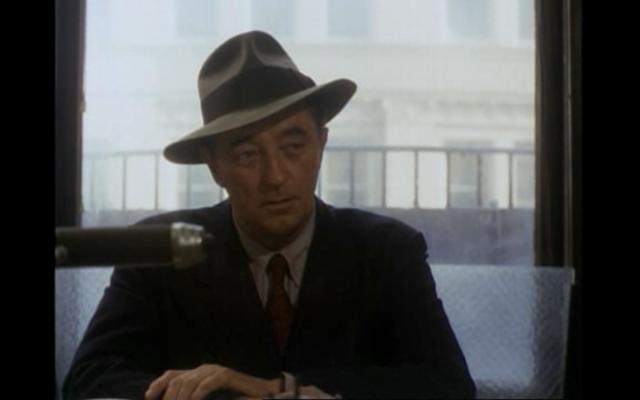Ah, Philip Marlowe. He’s the greatest detective in American literature, but one who hasn’t always been served by his films. Maybe that’s because he’s more complex than the usual private eye. Maybe it’s because the plots of Raymond Chandler’s novels are difficult to follow, without a clear narrative spine. Another blog entry in Noir Week discusses the most famous Marlowe film adaptation, Bogart’s The Big Sleep, so I will go elsewhere and talk about all the other big screen versions of Philip Marlowe, and there are many.
Marlowe in Disguise
The first two film adaptations of Chandler’s Marlowe books take the stories and use other detectives. Chandler’s novel, Farewell, My Lovely, is the basis for The Falcon Takes Over (1942). It isn’t a particularly significant movie, although it does star George Sanders, who may qualify as the coolest guy ever. And Time to Kill (1942) is adapted from The High Window and stars Lloyd Nolan as detective Mike Shayne. They’re both fine, but they’re not Marlowe.
The First and Best
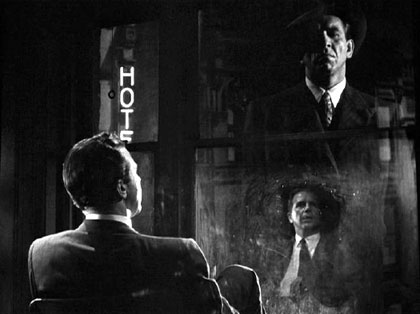
Many people rank The Big Sleep (1946) as the best Philip Marlowe movie, but those people are wrong. The best is Murder, My Sweet (1944) starring Dick Powell. In the early 1940s, Powell had a career as a song and dance man, so it was a risk to cast him as a hard-boiled dick, but it paid off. The studio used the title Murder, My Sweet because they thought the book title, Farewell, My Lovely, would make people think they were plunking down their dime to see one of Powell’s usual “Kid, you’re gonna be a star on Broadway” movies. Powell’s interpretation of Marlowe is great because he and genius director Edward Dmytryk understand that Marlowe is not a brute or a thug. He is a thoughtful, even intellectual man, who is bemused and disappointed by the seedy workings of his underworld rather than outraged or driven to violence. Powell brings a wonderful blend of tough and vulnerable, confused and smug, and the movie is great film noir.
The Big Marlowe Bubble
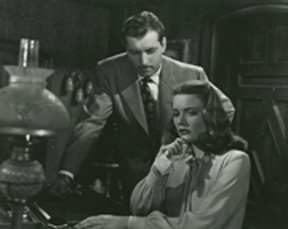 The Big Sleep (1946) made Philip Marlowe into the quintessential private eye of American film, but we’re not talking about that movie. And besides, Bogart isn’t really Philip Marlowe; he’s Sam Spade.
The Big Sleep (1946) made Philip Marlowe into the quintessential private eye of American film, but we’re not talking about that movie. And besides, Bogart isn’t really Philip Marlowe; he’s Sam Spade.
In 1947, two film versions appear. The Brasher Doubloon stars George Montgomery in an adaptation of the book, The High Window. The movie isn’t particularly memorable, except maybe for Montgomery’s moustache. George Montgomery is a B-level star, and not a good Marlowe. As an aside, though, I love him in the China Girl, where he does a Clark Gable pastiche in a wartime romance so wonderfully clichéd, it feels ironically post-modern.
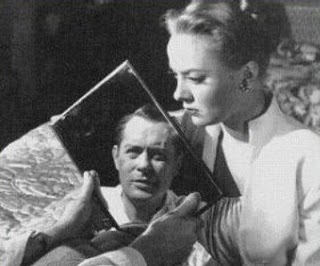 Also in 1947 comes The Lady in the Lake, based on the novel of the same name, starring Robert Montgomery. Montgomery is also the director and he tries to replicate the first-person style of the Chandler books by making the camera Philip Marlowe’s eyes. We only see Marlowe’s face on screen when Montgomery is looking in a mirror. We see his hand reach for doorknobs or slap the gat out of a dame’s hand, but otherwise, there is very little Marlowe in this Marlowe movie. The gimmick is interesting, but ultimately just a gimmick.
Also in 1947 comes The Lady in the Lake, based on the novel of the same name, starring Robert Montgomery. Montgomery is also the director and he tries to replicate the first-person style of the Chandler books by making the camera Philip Marlowe’s eyes. We only see Marlowe’s face on screen when Montgomery is looking in a mirror. We see his hand reach for doorknobs or slap the gat out of a dame’s hand, but otherwise, there is very little Marlowe in this Marlowe movie. The gimmick is interesting, but ultimately just a gimmick.
The Groovy Marlowes
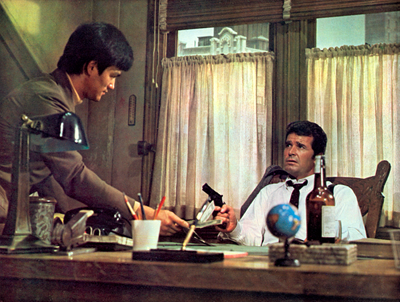
There are no Marlowe movies in the 1950s, as if he can’t make the transition from the black and white noir world into the Technicolor Atomic Age. I tend to prefer Marlowe in his natural setting, but I’m not a purist because I rather like Marlowe (1969) starring James Garner, which is an adaptation of The Little Sister. Set in Los Angeles in 1969 rather than 1949, Garner wears narrow neckties and unleashes cynical quips on hippies rather than fedora-clad gangsters. But the success of this movie is due mostly to the fact that James Garner is flat-out undislikable. Come on, he’s Maverick and Rockford. The movie also has Bruce Lee, so that’s pretty cool, too.
Now we come to the low point of the Marlowe movie saga: The Long Goodbye (1973) starring Elliott Gould and directed by Robert Altman. I have no problem with Gould as Marlowe, although he’s far from my favorite. And Altman is an innovative director, most of the time. But this movie is, to put it kindly, an abomination. Let me say this first: The Long Goodbye is a great novel. Not just a great Marlowe novel. Not just a great detective novel. It is a GREAT novel. It may be the Great American Novel.
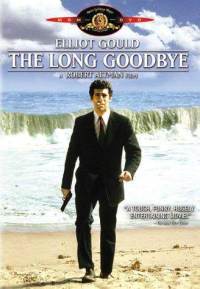 So Altman decides to change the ending, and not just a little. Imagine Gone With the Wind closing on Rhett saying, “Sure, what the hell, I’ll stay a little longer.” Or Empire Strikes Back with Darth Vader shrugging, “Yeah, Luke, I knew your dad. He was a nice guy.” That’s how much Altman changed it. He gutted the point of the story and obliterated the entire moral content of Philip Marlowe’s character. That is totally Altman’s right; he paid his money to license the book so he could make his movie his way. But why make a Philip Marlowe movie if you’re just going to destroy the fundamental nature of the character? Get your own damned detective.
So Altman decides to change the ending, and not just a little. Imagine Gone With the Wind closing on Rhett saying, “Sure, what the hell, I’ll stay a little longer.” Or Empire Strikes Back with Darth Vader shrugging, “Yeah, Luke, I knew your dad. He was a nice guy.” That’s how much Altman changed it. He gutted the point of the story and obliterated the entire moral content of Philip Marlowe’s character. That is totally Altman’s right; he paid his money to license the book so he could make his movie his way. But why make a Philip Marlowe movie if you’re just going to destroy the fundamental nature of the character? Get your own damned detective.
The Mitchums
Okay, I need to calm down by thinking about Robert Mitchum’s wonderful Farewell, My Lovely (1975), perhaps the second best Marlowe after Murder, My Sweet. It exudes a sweet 1940s nostalgia and has a great jazzy score. And Mitchum is really good. You can feel his well-worn sense of honor and sympathy for the downtrodden and, ultimately, his loneliness.
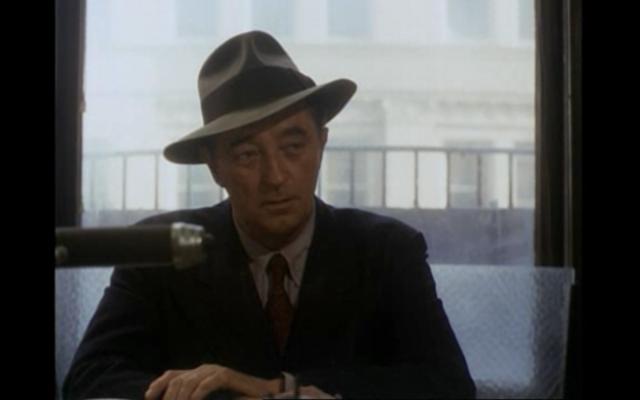
But next sigh comes Mitchum’s remake of The Big Sleep (1978). Everything right with Farewell, My Lovely is wrong with The Big Sleep. It’s modernized, which isn’t necessarily a death sentence, but it’s set it in London. Really? Philip Marlowe in London? And it is painfully clear that Mitchum is just there to pick up a paycheck, and take home the wardrobe. It’s a mess. And, unfortunately, it is the last major Marlowe film.
There have been television versions since then like Powers Boothe in the 1980s. He is okay, but Boothe isn’t my vision of Marlowe; too thuggish and mean-spirited. He lacks the smooth smartness of Dick Powell or the jaded weariness of Mitchum.

The Final Marlowe
Okay, I get to throw this in because I’m writing this thing. Here is the final Marlowe. My cat, Marlowe. He walks those mean streets, too, and he hates the Altman version of The Long Goodbye.
Clay Griffith is half of Clay and Susan Griffith, the authors of The Greyfriar: Vampire Empire Book 1 and The Rift Walker: Vampire Empire Book 2 (Sept. 2011) from Pyr Books. They are a married couple who have written and published together for more than a decade. Their credits not only include several books, but also numerous short stories published in many anthologies, some featuring noted genre characters like Kolchak the Night Stalker and The Phantom. They’ve also written for television and published graphic novels featuring characters such as The Tick and Allan Quatermain.
Clay wrote this blog because he’s the Philip Marlowe fan, and the reason the cat is named that way.










